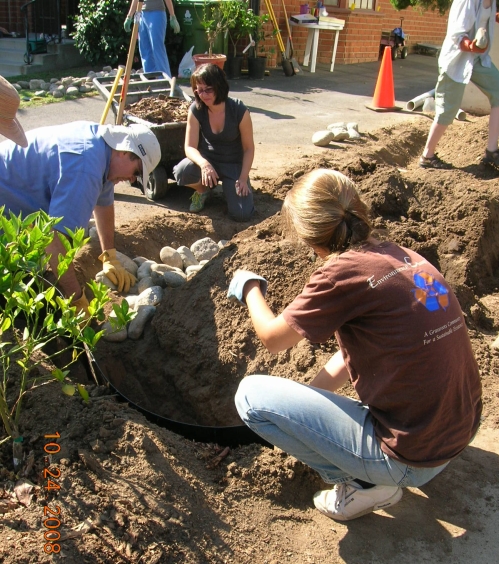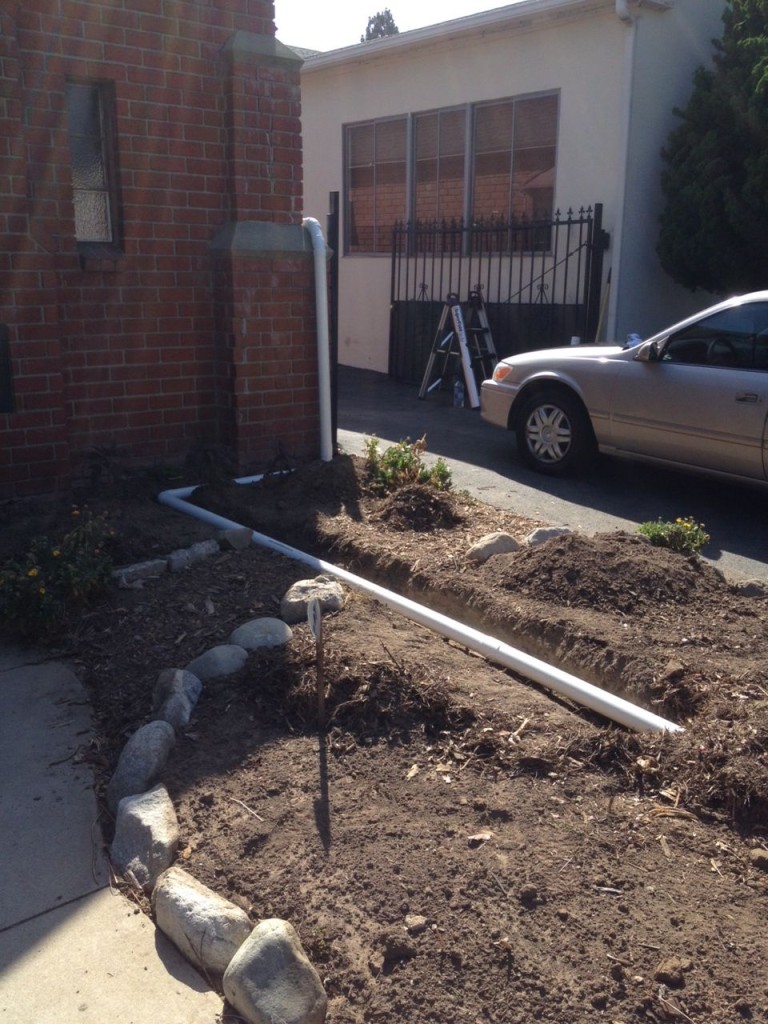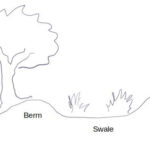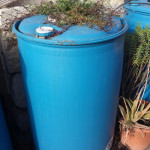
Rainwater harvesting: Infiltration features
One category of rainwater harvesting uses Mother Earth as your “storage device.” You design your landscape, including choices on surface materials and making decisions about the grading (land sculpting), with the goal of making water soak into the ground.
Up until fairly recently, architects were trained to whisk stormwater away from properties as quickly as possible. Thus rain gutters and downspouts are directed into storm drains, and storm drains go (around here) out to the ocean. Sidewalks, driveways, and pathways were made of impermeable materials like concrete, asphalt, or mortared brick or stone, and were similarly graded to drain to storm drains as quickly as possible. Unless you’ve reworked your property’s drainage within the past 5 years or so (or you had a rather extraordinary architect), this is probably how your property functions.
When we send precious rainwater zipping out to the storm drains, it does us no good in easing the drought. The water is wasted.

Beneath our cities are vast natural pockets which can store water. Mother Nature built this “water storing infrastructure” and our municipal water departments already have equipment to use it (see “groundwater” as a line item on any water company’s report that explains water supply). When we install rainwater infiltration, we are helping to replenish these underground basins.
When you infiltrate water on your property, it has an immediate effect on trees and plants. Your trees think they are growing in a richer water environment than they are (they get rain that falls on them directly PLUS the extra that is directed from your rainwater harvesting).
A lot of infiltration-style harvesting can be low-tech, low-maintenance, and low-cost and low-inputs to install.

Permeable surfaces
One of the most basic concepts in infiltration is to consider permeable surfaces. How much of your land is exposed, to act like a sponge and soak up water? (versus how much is entombed in concrete, asphalt, and buildings)
Whenever you are replacing hard surfaces (like concrete or asphalt), choose permeable surfaces. These can be high-tech, like the new replacements being used in Santa Monica. Or they can be very low tech, such as the chipped-bark mulch which covers most surfaces at the Community Garden at Holy Nativity.
This is part 3 in my series on Rainwater Harvesting.


